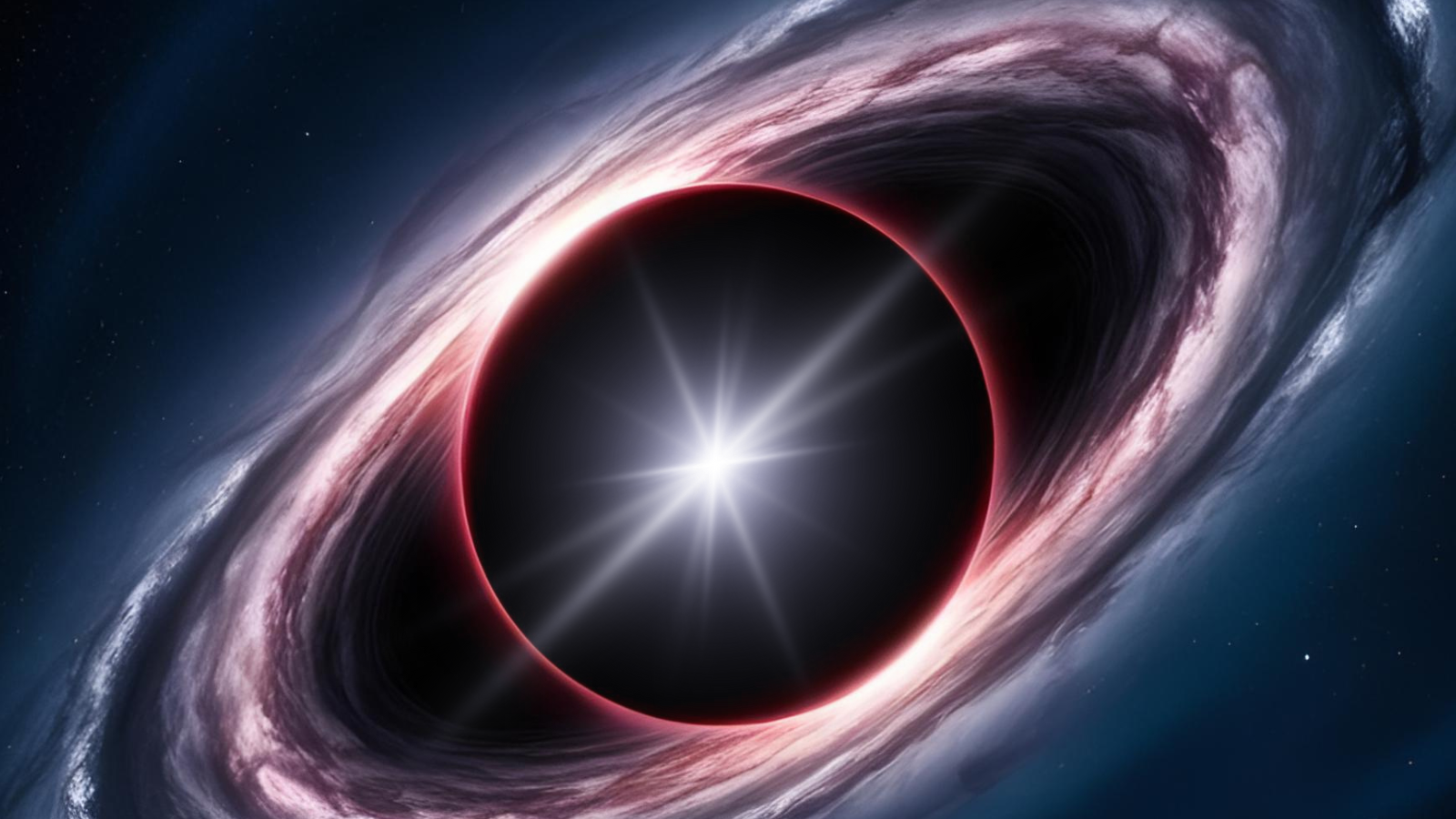Laws of physics are still broken: Attempt to explain away black holes' central singularity falls short, scientist says
"It may take decades before we find out what really happens in black holes."

Reports of the singularity's demise may have been premature.
Earlier this year, new research suggested a potential solution to one of the most troubling aspects of modern physics — that "singularities" seem to exist at the hearts of black holes.
The idea of the singularity has existed since black holes first emerged from the solutions to Albert Einstein's magnum opus theory of gravity, general relativity, which was published in 1916. It represents the point at which mass becomes infinitely dense — so concentrated that the curvature of space-time (the four-dimensional unification of space and time) it creates becomes infinite also.
This was and remains somewhat concerning, because it represents a breakdown of the laws of physics. Thanks to their central singularity, black holes don't obey the laws of physics — even general relativity, the theory that first described them. That's a paradox that just won't do for many physicists, who are working hard to eliminate it by busting the central singularity.
One of them is Robie Hennigar, a researcher at Durham University in England.
"The singularity is the most mysterious and problematic part of a black hole. It's where our concepts of space and time literally no longer make sense," Hennigar told Space.com back in March. "If black holes do not have singularities, then they are much more ordinary."
Black holes won't sit still for singularity solutions
In a study published in February, Hennigar and his colleagues used an effective theory that modified the Einstein field equations of general relativity so that gravity behaves differently when space-time is highly curved. This replaces the central singularity with a highly warped static region located at the core of the black hole.
Get the Space.com Newsletter
Breaking space news, the latest updates on rocket launches, skywatching events and more!
Unfortunately, this recipe of gravity just isn't to the taste of many scientists, including Polish theoretical physicist Nikodem Poplawski of the University of New Haven, who told Space.com that he has three main issues with the team's theory.
"Firstly, the team assumes the existence of five dimensions, whereas the experiments and observations indicate that we live in a four-dimensional space-time," Poplawski said. While lots of other theories that could account for singularities also rely on extra dimensions (string theory needs at least 11!), no evidence of such extra dimensions has yet presented itself.
"Secondly, in the team's model, the interior of a black hole is static," Poplawski continued, explaining that gravitational field equations predict that space-time within the outer boundary of a black hole, the event horizon, can't be static.
"Thirdly, their model adds ad hoc an infinite number of terms to the field equations, for the purpose of eliminating a singularity," Poplawski added. "That lacks a solid physical motivation, and it is merely a mathematical exploration of a theory of gravity with extra dimensions."
The singularity-busting theory differs from a great deal of other attempts to solve this issue, which take the route of uniting general relativity with quantum physics, our best theory of the universe on subatomic levels, attempting to produce a unifying theory of "quantum gravity." That doesn't mean those theories are any closer to answering the singularity puzzle, however.
One of the most favored unification theories is string theory, mentioned above, which replaces point-like particles with vibrating strings.
"The problem with string theory is that it requires extra dimensions, for which there is no experimental evidence," Poplawski said. "Also, there are many forms of string theory, so it would be impossible to falsify it. Another problem is that many forms of string theory require the existence of supersymmetric particles, for which there is no experimental evidence. Consequently, string theory is not a physical theory."
Poplawski added that attempts to eliminate black hole singularities within a classical physics framework have also failed or will fail because they are entirely mathematical and lack what he describes as "deep physical motivation." Of course, that doesn't mean there is no value in exploring ideas, as the singularity-busting team has done.
"There could be some mathematical value to exploring ideas like this," Poplawski said. "Sometimes physicists invent new mathematical techniques or find solutions to equations that could be used in other branches of physics."
So does Poplawski think that humanity could ever discover what lies within a black hole and close the book on physics-breaking singularities for good? Yes, but with a caveat.
"I believe humanity will discover what lies at the heart of a black hole only if every black hole creates a new universe and our universe was accordingly created in a black hole," Poplawski said, referring to a hypothesis he has been working on since 2010.
"If our universe was created in a black hole, its early expansion could be tested with the cosmic microwave background radiation, and possibly in the future, with neutrinos or gravitational waves, which could probe the earlier times in the universe," Poplawski continued. "Otherwise, we would not be able to empirically understand what happens inside a black hole."
Getting to the bottom of this mystery may be incredibly difficult, but that doesn't mean we shouldn't try. Poplawski cited the example of another aspect of physics that emerged from the theory of general relativity and took great perseverance to solve: tiny ripples in space-time called "gravitational waves."
"It took 100 years to detect gravitational waves on Earth after Einstein predicted them from his equations of general relativity," Poplawski said. "Therefore, it may take decades before we find out what happens in black holes."
Join our Space Forums to keep talking space on the latest missions, night sky and more! And if you have a news tip, correction or comment, let us know at: community@space.com.

Robert Lea is a science journalist in the U.K. whose articles have been published in Physics World, New Scientist, Astronomy Magazine, All About Space, Newsweek and ZME Science. He also writes about science communication for Elsevier and the European Journal of Physics. Rob holds a bachelor of science degree in physics and astronomy from the U.K.’s Open University. Follow him on Twitter @sciencef1rst.
You must confirm your public display name before commenting
Please logout and then login again, you will then be prompted to enter your display name.
